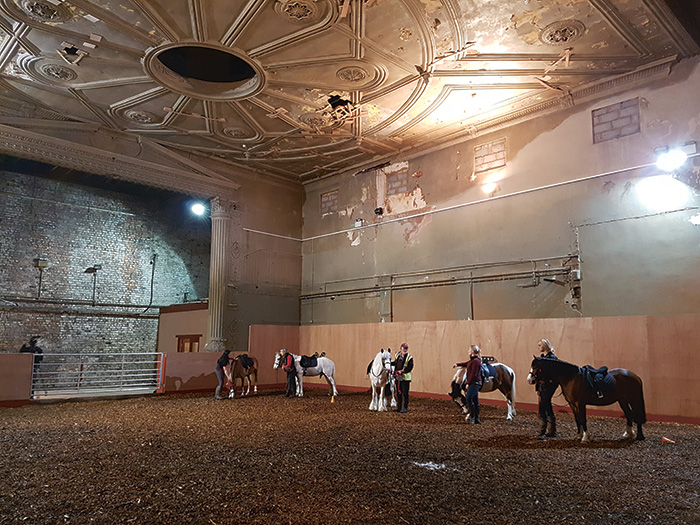Hugh Pearman, Editor of the RIBA Journal, writes about the MacEwen Award and this year's winner: Park Palace Ponies in Liverpool, designed by Harrison Stringfellow Architects.
At the RIBA Journal we started the MacEwen Award five years ago as a kind of journalistic investigation. We wanted to celebrate an aspect of architecture which doesn’t always show up in conventional awards and coverage: social responsibility. This was to be less about aesthetics, more about ethics. We called it “architecture for the common good”. Our fifth MacEwen winner, just announced, has very little visible ‘architecture’ at all but is a triumphant product of something architects are very good at: taking an inspiring idea and finding ways to make it happen, involving and enthusing others along the way.
Park Palace Ponies in Dingle, north Liverpool, is a charity that promotes equestrianism for local kids, in an urban environment. It’s about more than riding ponies (though I’ll come to that): exposure to the welfare and care and grazing and companionship of the animals – the whole business of horses, if you like – demonstrates a whole set of fascinating skills. A local community entrepreneur and philanthropist, Keith Hackett, had the idea: architects Sarah Harrison and Su Stringfellow of Harrison Stringfellow Architects (HSA) found ways to make it work.
Key to this is a near-derelict Victorian music hall turned cinema turned warehouse: the Park Palace. The big auditorium, its seats long gone, had a flat floor which has become an all-weather riding area. There’s second-hand stabling outside, and grazing on open land nearby. The ponies have become local characters. Local schools benefit from the experience, local allotment holders benefit from the manure. And a half-forgotten old building, still with a magnificently ornate ceiling and proscenium arch, has come back to life for a budget which is essentially peanuts.

We also have a high commendation this year for the first time: the “Shelter from the Storm” (SFTS) homeless shelter and neighbourhood café in the space previously occupied by a failing supermarket on a north London council estate. Young architects Holland Harvey had just a month to design and get planning approval for the space, and did so with thoughtfulness and flair. It feels good, it is open and engaged rather than hidden away, and it is steadily winning the trust of those living around it, several of whom now volunteer to help run it. Again, there was a strongly committed client, SFTS founder Sheila Scott.
There is no typical MacEwen Award candidate: there are always surprises in what gets put forward. The other winners to date are a ‘Segal Method’ 1980s timber building, previously offices, dismantled, moved and reconfigured to be the Oasis Children’s Centre in south London; an all-new youth club in Hampshire, The Point; a beautifully designed public sector care home for the elderly near Matlock in Derbyshire; and a cinema and community centre in Newcastle on Tyne.
Why MacEwen? Because Malcolm MacEwen, an editor of the RIBA Journal in the 1960s, was a very effective advocate of people-centred architecture while his planner wife Anni was an early critic of car-dominant town planning. Both campaigned on rural as well as urban issues. So we named it after them.
See the full range of 2020 projects at https://www.ribaj.com/macewen.









